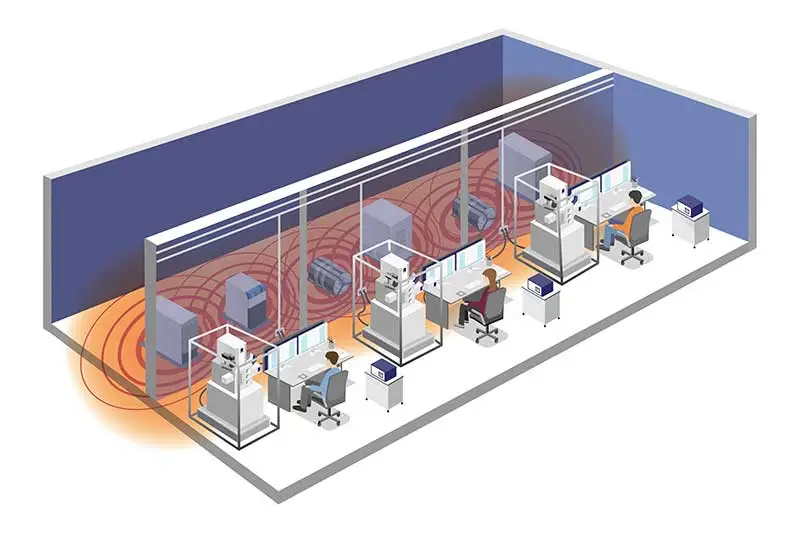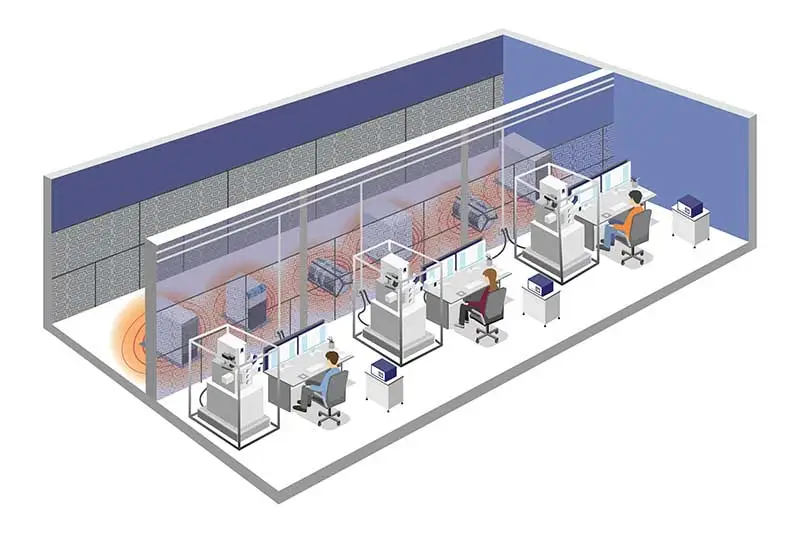
Acoustic Noise in Laboratories: Understanding the Problem & Finding Solutions
Laboratories are places where precision and accuracy are of utmost importance. Any external factor that affects the accuracy of the results can be disastrous. One such factor that often goes unnoticed is acoustic noise. The sources of acoustic noise can vary from mundane sources like air conditioning units to more complex sources like machinery used in experiments. Acoustic noise can be detrimental to the accuracy of the experiments and can lead to erroneous results. This blog post will discuss acoustic noise in laboratories, its effects, and potential solutions.
What is Acoustic Noise?
Acoustic noise refers to any unwanted sound in a laboratory environment that interferes with experiments. Vibrating objects create sound waves, and these vibrations cause pressure waves that propagate through the air. When these pressure waves reach our ears, we perceive them as sound. Acoustic noise is typically measured in decibels (dB), a logarithmic scale that relates sound intensity to the threshold of human hearing. The threshold of human hearing is typically around 0 dB, while a jet engine taking off is around 140 dB.
Sources of Acoustic Noise in Laboratories
Acoustic noise in laboratories can come from various sources. Some of the common sources are:
- HVAC Systems: Heating, ventilation and air conditioning (HVAC) systems are essential in maintaining the laboratory’s ambient temperature and humidity. However, these systems can produce significant amounts of noise, especially if they are improperly maintained.
- Equipment: Equipment used in laboratories, such as centrifuges, pumps, and motors, can produce a considerable amount of noise. Vibrations from these machines can also be transmitted through the floors and walls, making them more difficult to control.
- People: Laboratories are often busy places, and people moving around can produce noise. Activities such as opening and closing doors, walking on hard surfaces, and talking can all contribute to the overall acoustic noise level.

Effects of Acoustic Noise on Laboratory Experiments
Acoustic noise can have several negative effects on laboratory experiments. Some of the most common effects are:
- Interference with Measurements: Acoustic noise can interfere with sensitive instruments used in laboratory experiments. For example, microbalances used for weighing small amounts of substances can be affected by even small amounts of acoustic noise.
- Decreased Accuracy: Acoustic noise can cause variations in experimental results, leading to decreased accuracy. Sometimes, the effect can be so significant that the results are invalid.
- Physical Effects: Prolonged exposure to high levels of acoustic noise can cause physical effects such as hearing loss and tinnitus.
Solutions to Acoustic Noise in Laboratories
Fortunately, there are several potential solutions to acoustic noise in laboratories. Here are some of the most effective ones:
- Soundproofing: One of the most effective ways to reduce acoustic noise is to soundproof the laboratory. This involves adding insulation and acoustic panels to walls, ceilings, and floors to absorb sound waves.
- Equipment Maintenance: Regular maintenance of laboratory equipment can help reduce the amount of noise they produce. Lubricating moving parts and tightening loose components can reduce vibrations and noise.
- Room design: The design of laboratory rooms can also impact noise levels. Acoustic treatments such as wall panels and ceiling tiles can reduce sound reflections and improve speech intelligibility. Additionally, using acoustic barriers such as doors and partitions can reduce noise transmission between rooms.
- Administrative controls: Scheduling noisy equipment use during non-working hours and reducing the number of people in the laboratory can also help reduce noise levels.

Conclusion
Acoustic noise is a significant problem in laboratories, and it can severely affect experiment accuracy and the health of laboratory workers. However, with proper planning and implementation of noise reduction strategies, it is possible to minimize the impact of acoustic noise. Using acoustic soundproofing, HVAC system design, room design, proper equipment isolation and maintenance, and administrative controls, laboratory owners and managers can create a safe and quiet laboratory environment for their workers and experiments.














